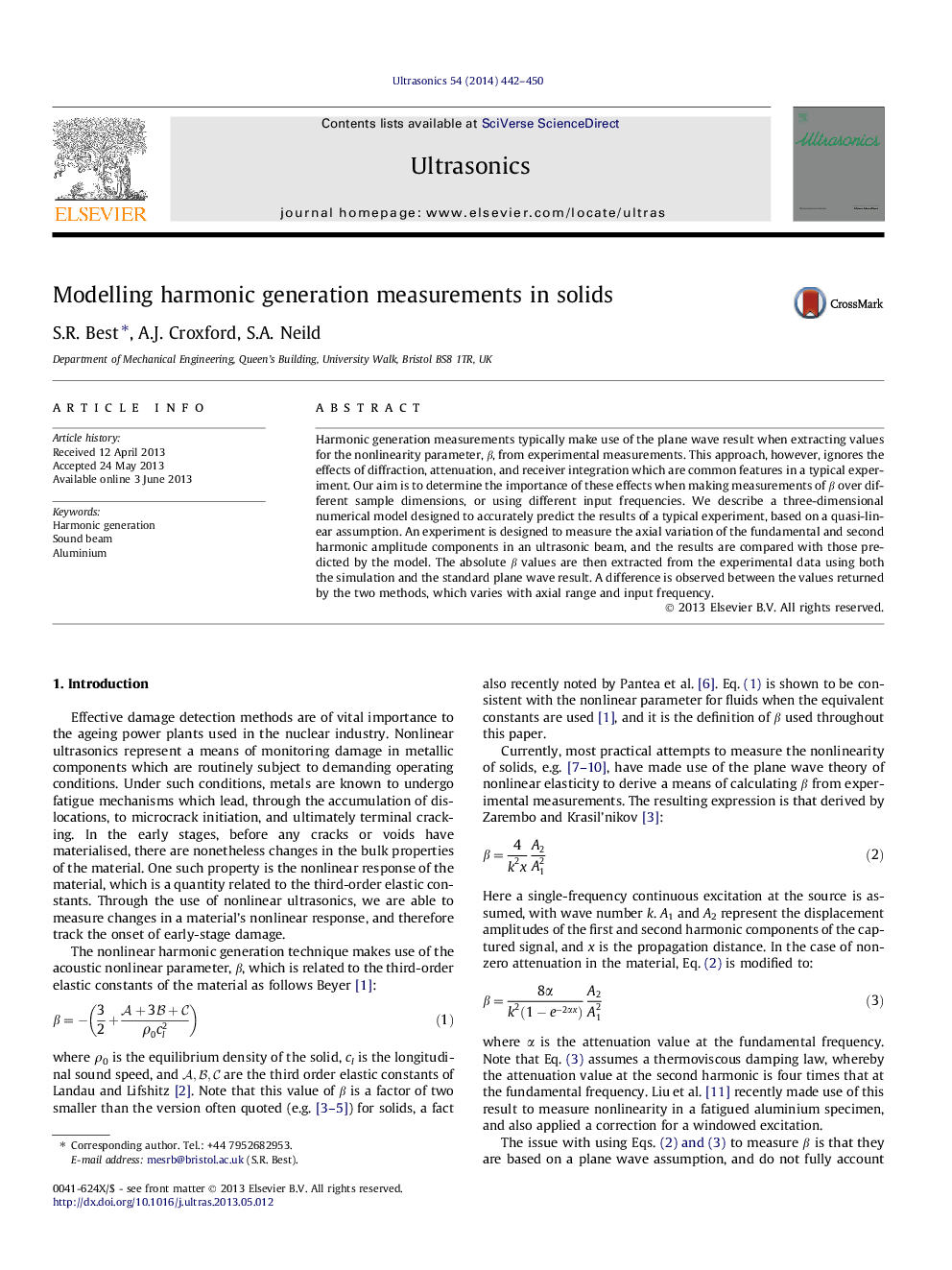| Article ID | Journal | Published Year | Pages | File Type |
|---|---|---|---|---|
| 10690476 | Ultrasonics | 2014 | 9 Pages |
Abstract
Harmonic generation measurements typically make use of the plane wave result when extracting values for the nonlinearity parameter, β, from experimental measurements. This approach, however, ignores the effects of diffraction, attenuation, and receiver integration which are common features in a typical experiment. Our aim is to determine the importance of these effects when making measurements of β over different sample dimensions, or using different input frequencies. We describe a three-dimensional numerical model designed to accurately predict the results of a typical experiment, based on a quasi-linear assumption. An experiment is designed to measure the axial variation of the fundamental and second harmonic amplitude components in an ultrasonic beam, and the results are compared with those predicted by the model. The absolute β values are then extracted from the experimental data using both the simulation and the standard plane wave result. A difference is observed between the values returned by the two methods, which varies with axial range and input frequency.
Keywords
Related Topics
Physical Sciences and Engineering
Physics and Astronomy
Acoustics and Ultrasonics
Authors
S.R. Best, A.J. Croxford, S.A. Neild,
